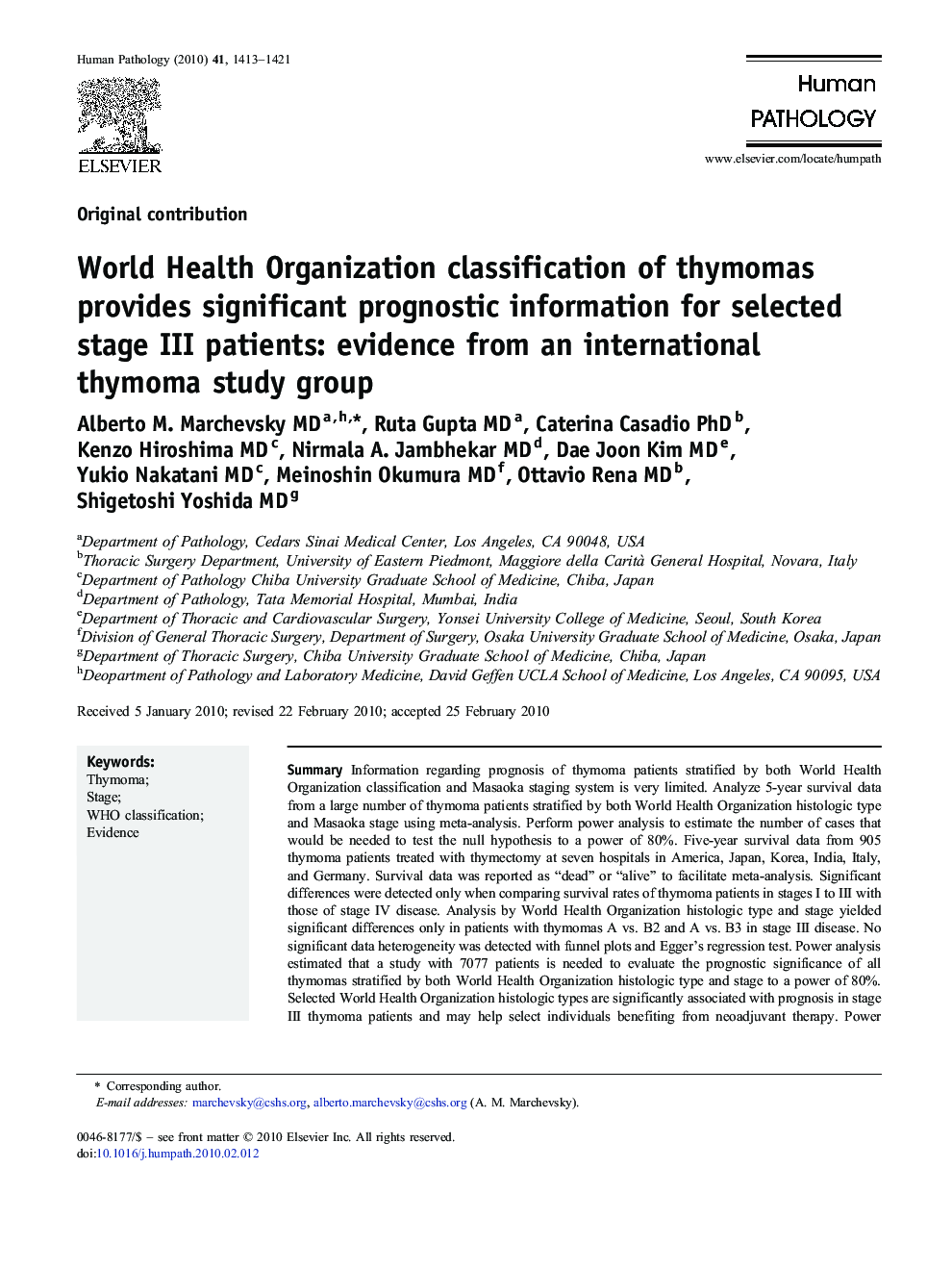| کد مقاله | کد نشریه | سال انتشار | مقاله انگلیسی | نسخه تمام متن |
|---|---|---|---|---|
| 4134331 | 1271455 | 2010 | 9 صفحه PDF | دانلود رایگان |

SummaryInformation regarding prognosis of thymoma patients stratified by both World Health Organization classification and Masaoka staging system is very limited. Analyze 5-year survival data from a large number of thymoma patients stratified by both World Health Organization histologic type and Masaoka stage using meta-analysis. Perform power analysis to estimate the number of cases that would be needed to test the null hypothesis to a power of 80%. Five-year survival data from 905 thymoma patients treated with thymectomy at seven hospitals in America, Japan, Korea, India, Italy, and Germany. Survival data was reported as “dead” or “alive” to facilitate meta-analysis. Significant differences were detected only when comparing survival rates of thymoma patients in stages I to III with those of stage IV disease. Analysis by World Health Organization histologic type and stage yielded significant differences only in patients with thymomas A vs. B2 and A vs. B3 in stage III disease. No significant data heterogeneity was detected with funnel plots and Egger's regression test. Power analysis estimated that a study with 7077 patients is needed to evaluate the prognostic significance of all thymomas stratified by both World Health Organization histologic type and stage to a power of 80%. Selected World Health Organization histologic types are significantly associated with prognosis in stage III thymoma patients and may help select individuals benefiting from neoadjuvant therapy. Power analysis shows that studies with much larger number of patients are needed to exclude the possibility that histologic type may provide significant prognostic information in other stages of the disease.
Journal: Human Pathology - Volume 41, Issue 10, October 2010, Pages 1413–1421